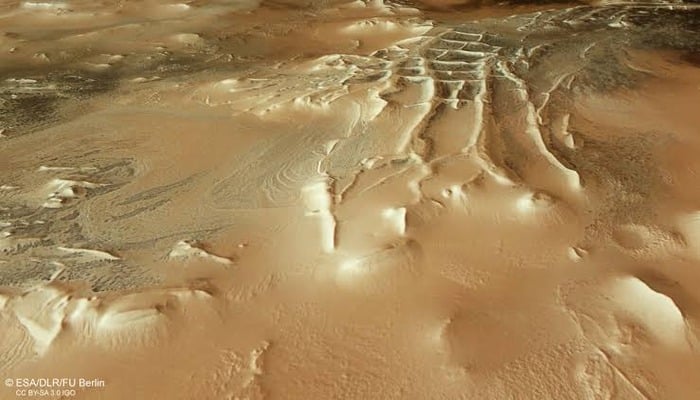
Inca city, the southern polar region of Mars was observed with the formation of black Martian spiders in a recent photograph released by the European Space Agency.
The infestation of these creepy crawlies was noticed after a chemical reaction, the image showed the data collected by the Mars Express orbiter, in which the formation of these black cluster dots occurs due to the seasonal eruptions of the carbon dioxide gas.
During spring when the southern hemisphere begins to warm, the carbon dioxide ice layers begin to melt, the heat causes these ice layers to turn into gases and begin to expand, its rise carries dark dust from the solid surface that shatters like a geyser and causes the formation of these dark, black spiders pattern on Mars.

The Inca City is also known as Angustus Labyrinthus. It is named for its linear, ruin-like ridgelines, which were once thought dunes or perhaps the remnants of ancient Martian glaciers, which may have left behind high walls of sediment as they subsided.
Previously, it was observed that a large crater about 53 miles wide in the region was formed by a space rock impacting the surface, which could have caused the surrounding field to accumulate with rising lava. This gradually evolved into Spindle Formations of the spiders on Mars, which NASA observed in 2018 and 2020.
















